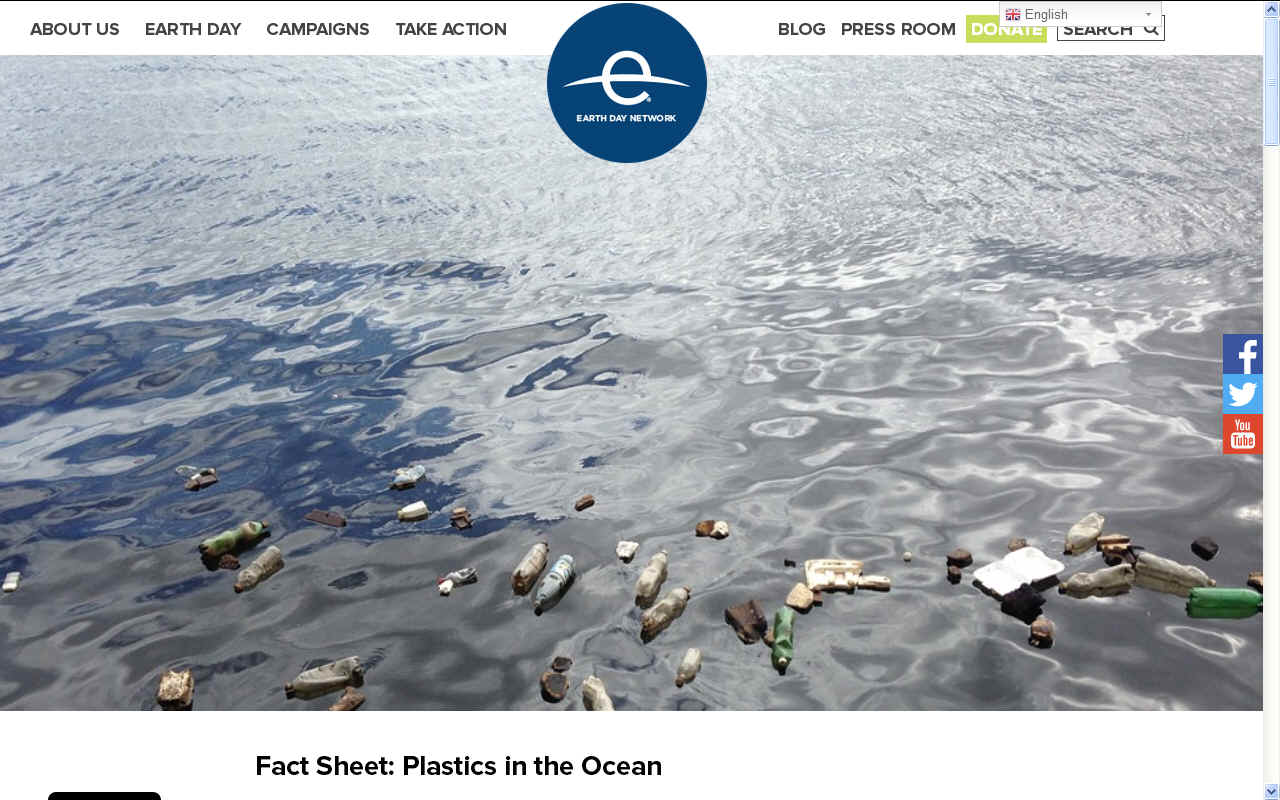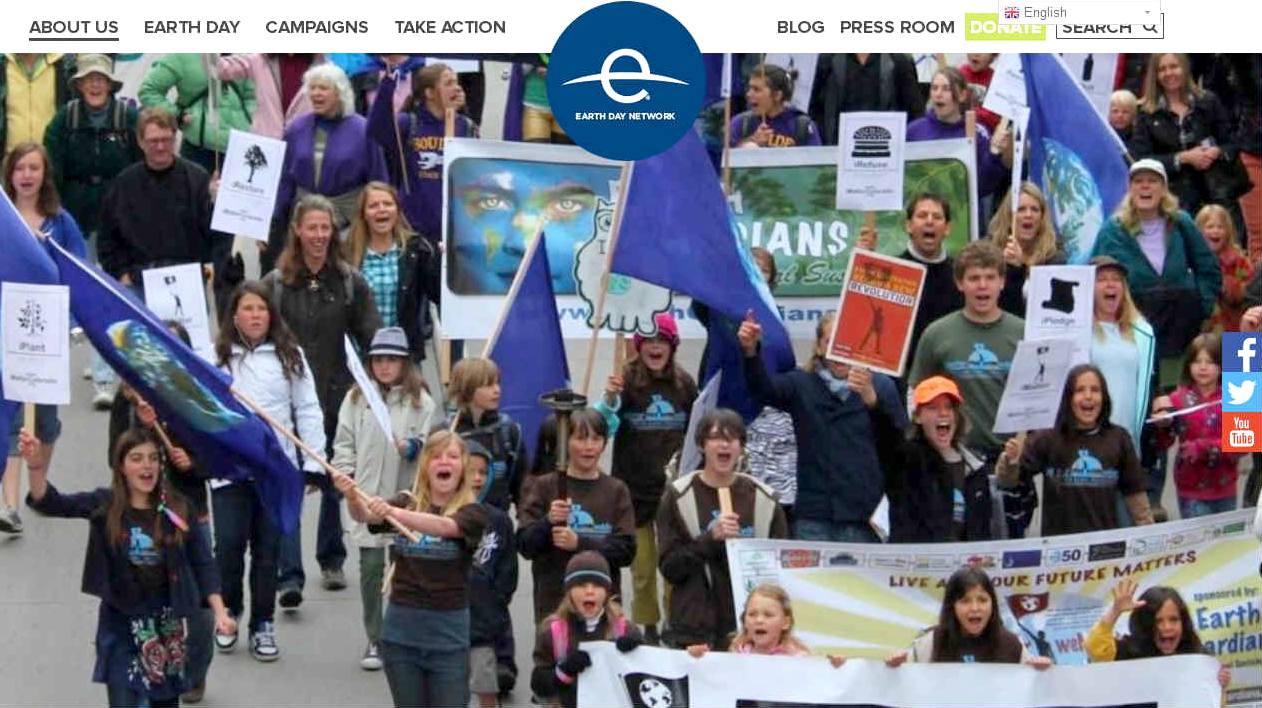|
EARTH DAY OCEAN PLASTIC 10 FACTS INFORMATION SHEET
PLEASE USE OUR A-Z INDEX TO NAVIGATE THIS SITE
|
|
THE MISSION - According to their website, Earth Day Network’s mission is to diversify, educate and activate the environmental movement worldwide. Growing out of the first Earth Day, Earth Day Network claims to be the world’s largest recruiter to the environmental movement, working with more than 75,000 partners in nearly 192 countries to build environmental democracy. More than 1 billion people now participate in Earth Day activities each year, making it the largest civic observance in the world. They work through a combination of education, public policy, and consumer campaigns.
The first Earth Day on April 22, 1970, activated 20 million Americans from all walks of life and is widely credited with launching the modern environmental movement. The passage of the landmark Clean Air Act, Clean Water Act, Endangered Species Act and many other groundbreaking environmental laws soon followed. Twenty years later, Earth Day went global, mobilizing 200 million people in more than 190 countries and lifting environmental issues onto the world stage.
EARTH DAY 2018
- END PLASTIC POLLUTION - Fact Sheet: Plastics in the Ocean
FACT #1
- About 8 million metric tons of plastic are thrown into the ocean annually. Of those, 236,000 tons are
microplastics – tiny pieces of broken-down plastic smaller than your
smallest fingernail
Erik van Sebille et al 2015 Environ. Res. Lett. 10 124006
https://www.nationalgeographic.org/encyclopedia/great-pacific-garbage-patch/
https://www.weforum.org/agenda/2016/10/every-minute-one-garbage-truck-of-plastic-is-dumped-into-our-oceans/
https://www.independent.co.uk/environment/nature/how-scientists-plan-to-clean-up-the-plastic-waste-threatening-marine-life-a6820276.html
https://www.ellenmacarthurfoundation.org/publications/the-new-plastics-economy-rethinking-the-future-of-plastics-catalysing-action
FACT #7 - Many marine organisms can’t distinguish common plastic items from food. Animals who eat plastic often starve because they can’t digest the plastic and it fills their stomachs, preventing them from eating real food.
Plastic
Pollution Primer and Action Toolkit, Earth Day Network, 2018
https://coral.org/coral-reefs-101/coral-reef-ecology/coral-reef-biodiversity/
FACT #9 - There is more plastic than natural prey at the sea surface of the Great Pacific Garbage Patch. This means that organisms feeding in the area are likely to have plastic as a major component of their diets. One example is that sea turtles by-caught in fisheries operating within and around the 'Patch' can have up to 74% (by dry weight) of their diets composed of ocean plastics.
https://www.theoceancleanup.com/updates/how-ocean-plastics-turn-into-a-dangerous-meal/
http://www.onegreenplanet.org/environment/how-plastic-from-our-clothing-is-ending-up-in-fish/
OCEAN CLEANUP PROJECTS A - Z
* Adidas * Algalita research foundation * Aliance to end Plastic Waste AEPW * Baltimore Mr Trash river cleaning barge * BAN - Basel Convention Action Network * Boyan Slat's ocean booms * CLAIM H2020 EU marine plastic project * Earth Day - Fact sheet ocean plastic * Fionn Ferreira's ferrofluid extraction of microplastics * FlashLight Press Michelle Lord & Julia Blatt * GRIPS - Global Research & Innovation in Plastics Sustainability * Interceptor tethered river cleaning barges * Junk Raft - plastic awareness voyage * Kids Against Plastic Tat KAPTAT * Miss Ocean - Plastic Awareness Events * Nike - Sneakers from recycled materials, ocean spills * 4Ocean recycled plastic bracelets * Nike - Sneakers from recycled materials, ocean spills * Plastic Oceans Org * Seabin * SeaVax autonomous drones * Surrey University PIRATE & Triton * Sussex Bay - Coastline marine rewilding project * WRAP - Waste & Resources Action Programme
CONTACTS
Earth Day Network
LINKS & REFERENCE
https://www.earthday.org/2018/04/05/fact-sheet-plastics-in-the-ocean/
|
|
|
ABS - BIOMAGNIFICATION - CANCER - CARRIER BAGS - COTTON BUDS - DDT - FISHING NETS HEAVY METALS - MARINE LITTER - MICROBEADS - MICRO PLASTICS - NYLON - OCEAN GYRES - OCEAN WASTE PACKAGING - PCBS - PET - PLASTIC - PLASTICS - POLYCARBONATE - POLYSTYRENE - POLYPROPYLENE - POLYTHENE - POPS PVC - SHOES - SINGLE USE - SOUP - STRAWS - WATER
PLEASE USE OUR A-Z INDEX TO NAVIGATE THIS SITE
|
|
|
This website is provided on a free basis as a public information service. copyright © Cleaner Oceans Foundation Ltd (COFL) (Company No: 4674774) 2023. Solar Studios, BN271RF, United Kingdom. COFL is a company without share capital.
|

